Cedar – Sacred Tree With Medicine Power In Native American Beliefs
A. Sutherland - AncientPages.com - Cedar is considered the most sacred tree in Native American beliefs.
Cedar holds significant importance in Native American traditions as a ceremonial plant. Numerous tribes utilize cedar for its aromatic properties as incense and for its purifying qualities.
The plant plays a crucial role in various aspects of Native American spiritual and medicinal practices. Specifically, cedar is closely linked to prayer rituals, healing ceremonies, and the realm of dreams. Additionally, it is believed to offer protection against illnesses.
This versatile plant's widespread use across different tribes underscores its cultural and spiritual significance in Native American communities.
According to the Navajo, it was the first tree planted by man in the Third World to save people from a flood (Dineh). In other beliefs, this tree had medicinal power and represented the Southern direction in the Medicine Wheel. Thanks to its other unique properties, Cedar was widely used by Native tribes in rituals.
Speaking the Algonquian language, the Fox tribe of Native Americans, also known as the Mesquakie (Meskwaki), believed that the spirits of their ancestors lived in trees such as Cedar and the trees’ murmuring in the wind was the ancestors’ voices.
The Lakota, part of the Sioux Nation, burned cedar leaves as incense in ceremonies for Wakinyan, the Thunderbird. The Lakota’ say that burning Flat Cedar attracts good spirits, removes negative influences, and thus, purifies a space.
Known as hanté blaska to the Lakota, flat Cedar is a sacred herb often used in ceremony and during times of prayer, and an ancient legend confirms that this dried herb is also a favorite of enigmatic Thunder Beings (Wakinyan)
In “Lakota Belief And Ritual,” James R. Walker, a physician to the Pine Ridge Sioux from 1896 to 1914, writes:
“If a Lakota is doing a ceremony relative to Wakinyan (Thunder Being), he should make an incense of the leaves of the cedar tree. This is because the cedar tree is Wakinyan's favorite, and he never strikes it with lightning. The smell of the smoke of the Cedar is pleasing to him…”
The Seminole - a Native American people from Florida - believed that burning cedar leaves cleansed a home of evil intentions. In the Navajo (Dineh) emergence story, First Man-made attempts to save the people in the Third World from a flood, so he planted a cedar tree that they could climb to reach the Fourth World.
Unfortunately, the cedar tree was not tall enough. The Pawnee, a Plains Indian tribe headquartered in Pawnee, Oklahoma, and the Arapaho people from the plains of Wyoming and Colorado say that Mother Corn taught the people how to cultivate corn, and then she became a cedar tree.
But how did this magnificent sacred tree get its red color?
The Cherokee and the Coyaha people (also known as the Yuchi, a Native American tribe traditionally inhabited the eastern Tennessee River valley in 16th century Tennessee, answer this question through their beliefs.
A wicked magician once caused great harm until two brave warriors found and killed him, their story tells. To kill the head, they were told to tie it to the upper branches of a tree. They tried to use many different trees but in vain. They cut off his head and carried it home, but it remained alive. Finally, there was only one tree left. It was a cedar, so they tied the head to it and killed it. The blood that trickled down the tree’s trunk gave the cedar wood its unique red color.
The cedar tree holds significant cultural importance among numerous Salish tribes, indigenous peoples of the American and Canadian Pacific Northwest.
These communities widely recognize it as a symbol of generosity and providence. Notably, these tribes have developed specific rituals associated with the felling of cedar trees, underscoring the tree's revered status. Cedar plays a crucial role in various traditional practices. It is a common element in sweat lodge ceremonies, which are important purification rituals.
Additionally, cedar is frequently incorporated into medicine bundles and amulets, highlighting its perceived protective and healing properties. These uses demonstrate the multifaceted significance of cedar in Salish cultural and spiritual traditions.
Written by – A. Sutherland AncientPages.com Staff Writer
First version of this article was published on January 6, 2018
Copyright © AncientPages.com All rights reserved. This material may not be published, broadcast, rewritten or redistributed in whole or part without the express written permission of AncientPages.com
More From Ancient Pages
-
 Viking Ivar The Boneless Could Be Buried In Repton – Remarkable Viking Burial Holds Clues To Where Ragnar Lodbrok’s Son Died
Featured Stories | Jun 17, 2022
Viking Ivar The Boneless Could Be Buried In Repton – Remarkable Viking Burial Holds Clues To Where Ragnar Lodbrok’s Son Died
Featured Stories | Jun 17, 2022 -
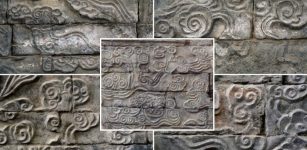 Huge Over 1,000-Year-Old Beautiful Stone Murals Discovered In Central China
Archaeology | Oct 14, 2022
Huge Over 1,000-Year-Old Beautiful Stone Murals Discovered In Central China
Archaeology | Oct 14, 2022 -
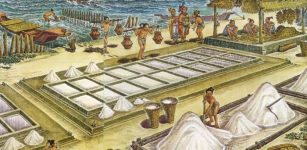 Salt Workers’ Residences At Underwater Maya Site – Identified
Archaeology | Nov 22, 2021
Salt Workers’ Residences At Underwater Maya Site – Identified
Archaeology | Nov 22, 2021 -
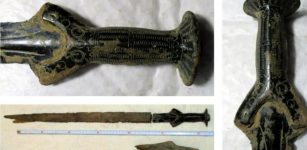 Rare 3,300-Year-Old Sword Accidentally Discovered In Jesenicko, Czech Republic
Archaeology | Nov 9, 2020
Rare 3,300-Year-Old Sword Accidentally Discovered In Jesenicko, Czech Republic
Archaeology | Nov 9, 2020 -
 Can Peptide Droplets Explain The Emergence Of The First Living Organisms On Earth?
Archaeology | Oct 20, 2021
Can Peptide Droplets Explain The Emergence Of The First Living Organisms On Earth?
Archaeology | Oct 20, 2021 -
 Unique Ancient Man-Made Underground Structure In New England Puzzles Experts – Who Built It And Why?
Featured Stories | Aug 11, 2024
Unique Ancient Man-Made Underground Structure In New England Puzzles Experts – Who Built It And Why?
Featured Stories | Aug 11, 2024 -
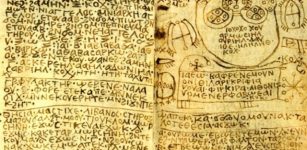 Ancient Mystery Of Baktiotha And The Egyptian Spell Book
Artifacts | Sep 4, 2015
Ancient Mystery Of Baktiotha And The Egyptian Spell Book
Artifacts | Sep 4, 2015 -
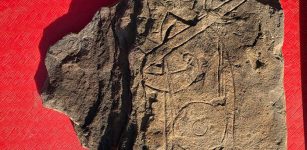 Remarkable Early Medieval ‘Govan Warrior’ Stone Discovered In Glasgow, Scotland
Archaeology | Sep 22, 2023
Remarkable Early Medieval ‘Govan Warrior’ Stone Discovered In Glasgow, Scotland
Archaeology | Sep 22, 2023 -
 Why Did Archaeologists Destroy Medieval King’s Wharf After Excavations?
Archaeology | May 17, 2023
Why Did Archaeologists Destroy Medieval King’s Wharf After Excavations?
Archaeology | May 17, 2023 -
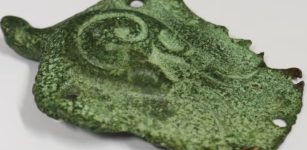 Rare 1,000 Year-Old Crusader-Era Bird Pendant Discovered
Archaeology | Mar 28, 2023
Rare 1,000 Year-Old Crusader-Era Bird Pendant Discovered
Archaeology | Mar 28, 2023 -
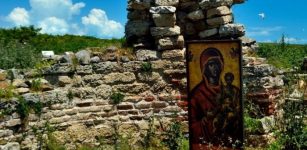 A 1,500-Year-Old Holy Well Probably With Healing Water – Discovered In Bulgaria
Archaeology | Nov 25, 2020
A 1,500-Year-Old Holy Well Probably With Healing Water – Discovered In Bulgaria
Archaeology | Nov 25, 2020 -
 Link Between Changes In Evolution And Climate Discovered
Archaeology | Oct 4, 2022
Link Between Changes In Evolution And Climate Discovered
Archaeology | Oct 4, 2022 -
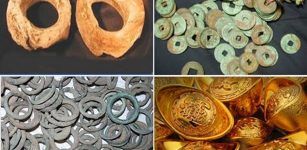 Our Lives Have Always Been Manipulated By Money – Part 3
Featured Stories | Jun 8, 2022
Our Lives Have Always Been Manipulated By Money – Part 3
Featured Stories | Jun 8, 2022 -
 Declining Fertility Rates May Explain Neanderthal Extinction
Archaeology | Jun 3, 2019
Declining Fertility Rates May Explain Neanderthal Extinction
Archaeology | Jun 3, 2019 -
 Ask And Embla: First Human Pair Created By Powerful God Odin And His Two Brothers
Featured Stories | Sep 24, 2016
Ask And Embla: First Human Pair Created By Powerful God Odin And His Two Brothers
Featured Stories | Sep 24, 2016 -
 Mystery Of The Banshee – Is The Celtic Death Messenger Linked To The Tuatha De’Dannan Race?
Celtic Mythology | Oct 25, 2015
Mystery Of The Banshee – Is The Celtic Death Messenger Linked To The Tuatha De’Dannan Race?
Celtic Mythology | Oct 25, 2015 -
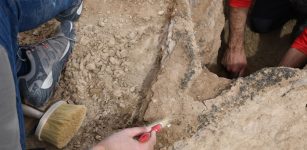 Unique, Well-Preserved 4,000-Year-Old Boat Discovered Near The Ancient City Of Uruk
Archaeology | Apr 4, 2022
Unique, Well-Preserved 4,000-Year-Old Boat Discovered Near The Ancient City Of Uruk
Archaeology | Apr 4, 2022 -
 2,550 Submerged Wooden Objects Recovered From The Templo Mayor Of Tenochtitlan
Archaeology | Jun 25, 2022
2,550 Submerged Wooden Objects Recovered From The Templo Mayor Of Tenochtitlan
Archaeology | Jun 25, 2022 -
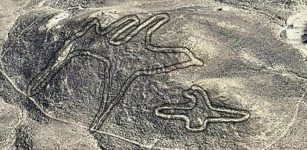 Nasca Lines: Researchers Identify 16 Bird Geoglyphs Drawn On Desert Plains Of Peru
Archaeology | Jun 23, 2019
Nasca Lines: Researchers Identify 16 Bird Geoglyphs Drawn On Desert Plains Of Peru
Archaeology | Jun 23, 2019 -
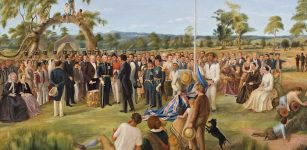 Tooth Analysis Sheds Light On South Australia’s Early Colonial History
Archaeology | Jul 6, 2022
Tooth Analysis Sheds Light On South Australia’s Early Colonial History
Archaeology | Jul 6, 2022



